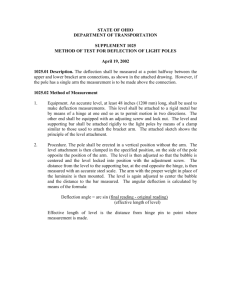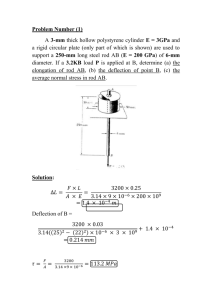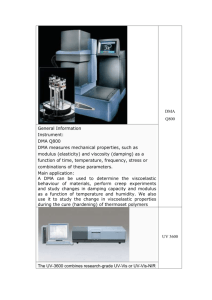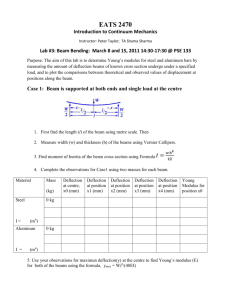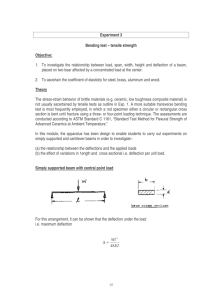Manfred Radmacher
advertisement
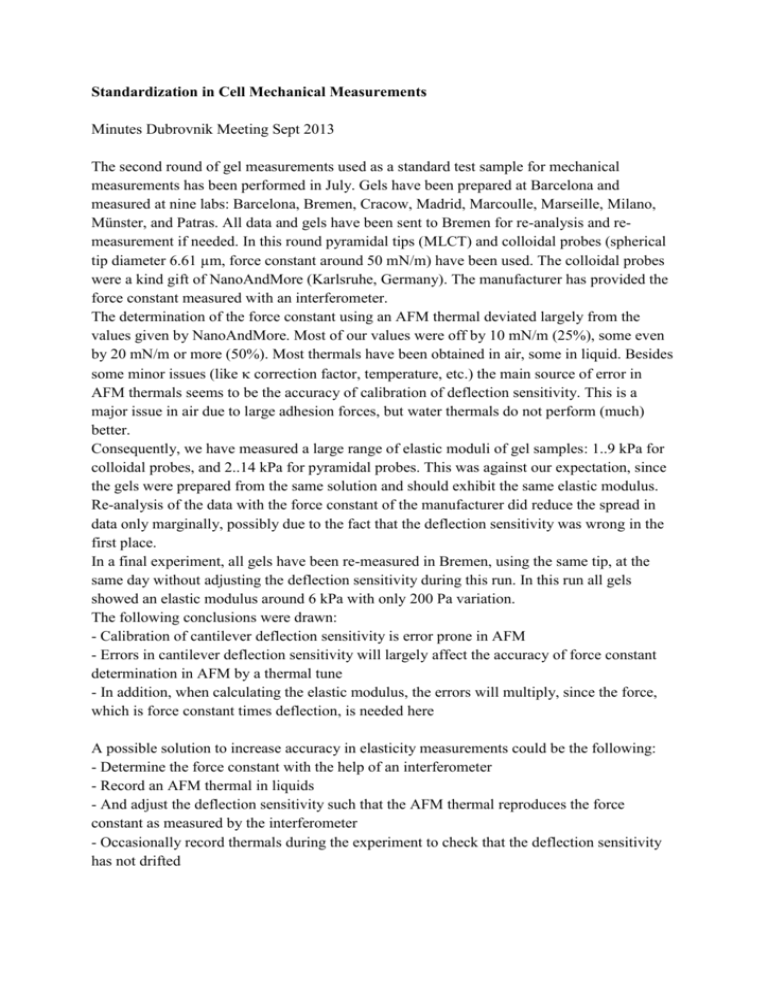
Standardization in Cell Mechanical Measurements Minutes Dubrovnik Meeting Sept 2013 The second round of gel measurements used as a standard test sample for mechanical measurements has been performed in July. Gels have been prepared at Barcelona and measured at nine labs: Barcelona, Bremen, Cracow, Madrid, Marcoulle, Marseille, Milano, Münster, and Patras. All data and gels have been sent to Bremen for re-analysis and remeasurement if needed. In this round pyramidal tips (MLCT) and colloidal probes (spherical tip diameter 6.61 µm, force constant around 50 mN/m) have been used. The colloidal probes were a kind gift of NanoAndMore (Karlsruhe, Germany). The manufacturer has provided the force constant measured with an interferometer. The determination of the force constant using an AFM thermal deviated largely from the values given by NanoAndMore. Most of our values were off by 10 mN/m (25%), some even by 20 mN/m or more (50%). Most thermals have been obtained in air, some in liquid. Besides some minor issues (like correction factor, temperature, etc.) the main source of error in AFM thermals seems to be the accuracy of calibration of deflection sensitivity. This is a major issue in air due to large adhesion forces, but water thermals do not perform (much) better. Consequently, we have measured a large range of elastic moduli of gel samples: 1..9 kPa for colloidal probes, and 2..14 kPa for pyramidal probes. This was against our expectation, since the gels were prepared from the same solution and should exhibit the same elastic modulus. Re-analysis of the data with the force constant of the manufacturer did reduce the spread in data only marginally, possibly due to the fact that the deflection sensitivity was wrong in the first place. In a final experiment, all gels have been re-measured in Bremen, using the same tip, at the same day without adjusting the deflection sensitivity during this run. In this run all gels showed an elastic modulus around 6 kPa with only 200 Pa variation. The following conclusions were drawn: - Calibration of cantilever deflection sensitivity is error prone in AFM - Errors in cantilever deflection sensitivity will largely affect the accuracy of force constant determination in AFM by a thermal tune - In addition, when calculating the elastic modulus, the errors will multiply, since the force, which is force constant times deflection, is needed here A possible solution to increase accuracy in elasticity measurements could be the following: - Determine the force constant with the help of an interferometer - Record an AFM thermal in liquids - And adjust the deflection sensitivity such that the AFM thermal reproduces the force constant as measured by the interferometer - Occasionally record thermals during the experiment to check that the deflection sensitivity has not drifted This procedure has been working well once in an initial experiment in Bremen. It will be repeated there and on different other machines, including a catalyst (at Münster) and possibly a multimode or JPK instrument. If it turns out to be a useful strategy, there will be a demonstration during the Viterbo meeting in March.

